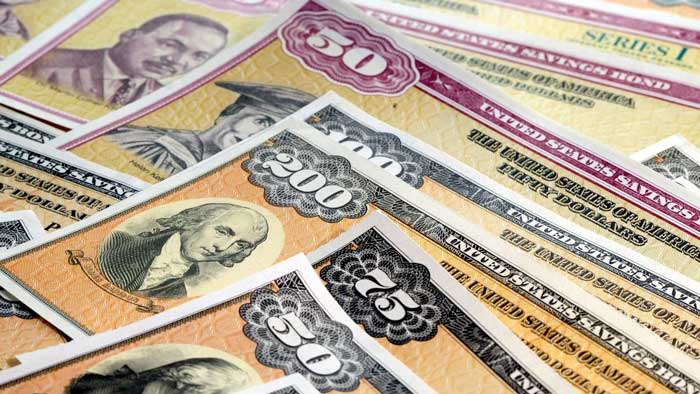What Are I Bonds?
I bonds are referred to as US savings bond which is non-marketable and bears a fixed interest rate along with a variable inflation rate that is adjusted semiannually or twice a year. These interest-bearing US government bonds intend to provide returns to investors while offering protection against inflation.
The bonds are issued at a fixed interest rate for as much as 30 years, along with a variable rate for inflation that is adjusted every twice, in May and November, a year, depending on the CPI for all urban consumers.
As said earlier, the bonds are non-marketable, meaning they cannot be purchased or sold in secondary markets. The Secretary of the Treasury determines the fixed rate of the I bonds.
From these features, the I bonds seem appealing to many investors who are looking for a safer shelter amid times of higher inflation, but there are also certain limitations that investors should keep in mind.
I Bonds remain an attractive choice for many investors. These inflation-adjusted U.S. savings bonds will earn a 6.89% annual rate for six months, starting Nov. 1. Previously, I bonds earned a 9.62% annual rate when bought before Oct. 28.
The yield for I Bonds far exceeds cash, and the bonds are appealing for investors who want to grab a higher rate of return without the risk of the stock market. I Bonds have been popular with investors this year as inflation hit four-decade highs and markets plunged. The Treasury sold nearly as many I bonds on Friday—a little under $1 billion dollars—than it sold over the course of three years from 2018 to 2020, a Treasury Department spokesman said.
Why have people flocked to I bonds?
Investing means risk. The stock market has been all over the place — up, down, way down — so people are looking for a safe place to park their cash.
Year to date, the S&P 500 is down 19% and the Dow Jones industrial average is off 10%, according to Bloomberg. The tech-heavy Nasdaq has dropped by 30%.
After years of pitiful interest on savings and checking accounts, I bonds, backed by the federal government, are a beacon of financial security.
From November 2021 until the end of October, the Treasury Department sold more than $35 billion in electronic savings bonds.
That’s a staggering amount of cash people were transferring from their savings and checking accounts — and in stark contrast with the financial situation of other Americans struggling to deal with high inflation. It shows there are many Americans who have money to spare, especially since you can’t sell an I bond for 12 months.
I-bond buyers aren’t allowed to redeem them for the first year
After that, you can sell the bond, but that will forfeit the last three months of interest. After five years, investors can sell with no restrictions.
Investors collect all the interest on the bond at the time they redeem it or when it matures (30 years after issuance.) They also pay tax on the interest at that time, and not before. I-bonds are exempt from local and state income taxes, making them another good choice for people in high-tax states.
However, the minimum one-year wait makes I-bonds a poor choice for a true emergency fund — money that a person needs to access at a moment’s notice to cope with a job loss, illness or other unexpected financial problem.
How to buy I-bonds? hot investment
The Treasury Department, the federal body that issues I bonds, offers two purchase methods. The main way is to go online using TreasuryDirect.gov, and the I bonds bought through this website are digital. There’s also an entirely separate way to purchase paper I bonds. Neither is simple, but we’ll walk you through both options below.
Should you buy I bonds now?
If you’re looking at the yield on your savings account, which is probably well below 1% right now (unless you have a high-yield online savings account,) and you’re worried about inflation eating away at your money’s buying power, now could be a great time to look into I bonds, which boast a 6.89% annualized interest rate.
The interest rate will stay at 6.89% until the first business day of May 2023. On that day, the Treasury Department will announce a new rate based on inflation and possibly set a new fixed rate.
Because of the unique way the interest rates work on I bonds, if you buy one any time between now and and the end of April 2023, you will lock in a full six months of 6.89% interest. Guaranteed. Then, your interest will compound, be added to your bond’s principal value and your rate will change to the new rate that’s announced in May 2023.
So if you purchase an I bond any time in December, for example, you’d receive an annualized rate of 6.89% for a full six months.
By comparison, the national average interest rate for savings accounts right now is 0.21%, according to the FDIC.
So if inflation is eating away at your savings (and you’re well aware of the withdrawal caveats mentioned above,) I bonds are still looking like a pretty good deal right now — even if the rate dropped from its recent all-time high.
I bonds are sold online at TreasuryDirect
Pro tip: Double-check your banking details. If you make a mistake with your banking information or have to change it for any reason, you’ll need to mail in a paper form that is signed in the presence of an “authorized certifying official.”
- Visit TreasuryDirect.gov and click on the green Open an Account link.
- Review the terms and conditions of the site and the information you’ll need to open an account: Social Security number; email address; bank account and routing numbers.
- Click the blue Apply Now button.
- Select the “Individual” radio button and click Submit.
- Enter your personal information, including email address and banking account and routing details and click Submit.
- Review your info and click Submit.
Select a personalized image and caption (security measure) and hit Submit. - Choose a password and answer three security questions (I suggest recording your answers somewhere) and Submit again.
- TreasuryDirect will then email you an account number that is one letter followed by nine numbers. Record your account number.
- Go to the home page again and click on the TreasuryDirect login link, then click the orange Login button.
- Enter the account number that was emailed to you and hit Submit.
- Since it’s your first login, TreasuryDirect will email you again with a one-time passcode — check your email (and hang in there!).
- Enter your passcode and click “Register this computer” to avoid the one-time password at future logins.
- Enter your password. You can’t paste it. You can’t even type it! You need to enter it using your mouse and a virtual keyboard (sorry, fellow users of
- password managers).
- Exhale — you’re in.
Reinvestment Risk
Reinvestment rate risk is the chance that an investment will produce lower than expected income due to a future drop in interest rates. This risk is most closely associated with fixed-income investments, especially callable bonds. Shorter-term bonds also tend to have a higher reinvestment rate risk than long-term bonds. This occurs when an investor must reinvest funds as a lower-than-anticipated rate in the future due to falling rates.
Reinvestment rate risk is especially relevant with callable bonds. These are bonds that the issuer has reserved the right to redeem before the maturity date by paying bondholders the securities’ par value, also called the face value.
When a bond is called, the investor receives the face value of the bond but then must find a new place to invest it. If interest rates have declined since the investor purchased the bond, it may be difficult to find a bond of similar qualify that pays a similarly high rate of interest. This change of having to accept a lower rate of return is reinvestment rate risk.
How Are I Bonds Taxed?
I bonds are exempt from state and municipal, but not federal, income taxes. If they’re used to pay for qualified higher education expenses, however, I bonds may be completely tax-exempt.
Owners can pay taxes on the interest earned annually, at maturity or when the bond is cashed. The only state tax due would be estate or inheritance taxes.
The owner of the bond is liable for the tax payments, regardless of who purchased the bond. So if you received an I bond as a gift, you are responsible for the tax payments.
What Are the Benefits of I Bonds?
The chief benefit of I bonds is that they protect the purchasing power of your cash from inflation. When prices rise across the economy, they erode how much the same amount of dollars can buy, but safe investments like I bonds can help you maintain the value of the cash component of your asset allocation.
Any security offered by the U.S. Treasury has nearly zero risk of default, and, as noted above, I bonds offer attractive tax benefits. Their interest payments, for instance, are exempt from state and local taxes, and they may be entirely tax free if used to pay for college tuition and fees at an eligible institution.
Marc Scudillo, managing officer of EisnerAmper Wealth Management and Corporate Benefits LLC likes I bonds for conservative investors. “Buying I bonds can be an attractive college savings strategy option as an alternative or in addition to 529 plans, which also grow tax free for qualifying higher education,” Scudillo says.
Can I buy I bonds for my kids?
Yes. A parent or guardian can set up a custodial TreasuryDirect account for a child younger than 18. You can purchase I bonds for your child within the minor account, which you must link to your own TreasuryDirect account. Other people can send I bonds as gifts to your child’s account, but you will have to supply your child’s Social Security number and TreasuryDirect account number to the giver. As with an adult, the purchase limit for a child—including gifts received—is $10,000 per calendar year for electronic I bonds.
With inflation at four-decade highs, investors are ever more interested in higher-yielding, lower-risk investments, and I bonds fit the bill. The current interest rate on I bonds is 6.89%, which will apply until April 2023. This is down from the 9.62% rate in the six months to October 2022.
They are free from both credit risk and inflation risk, and they currently offer a risk-adjusted return that is hard to beat. That said, I bonds do have some disadvantages, such as their early redemption penalties and the fact that you’ll have to hold the bonds for a full 20 years before they reach maturity.









